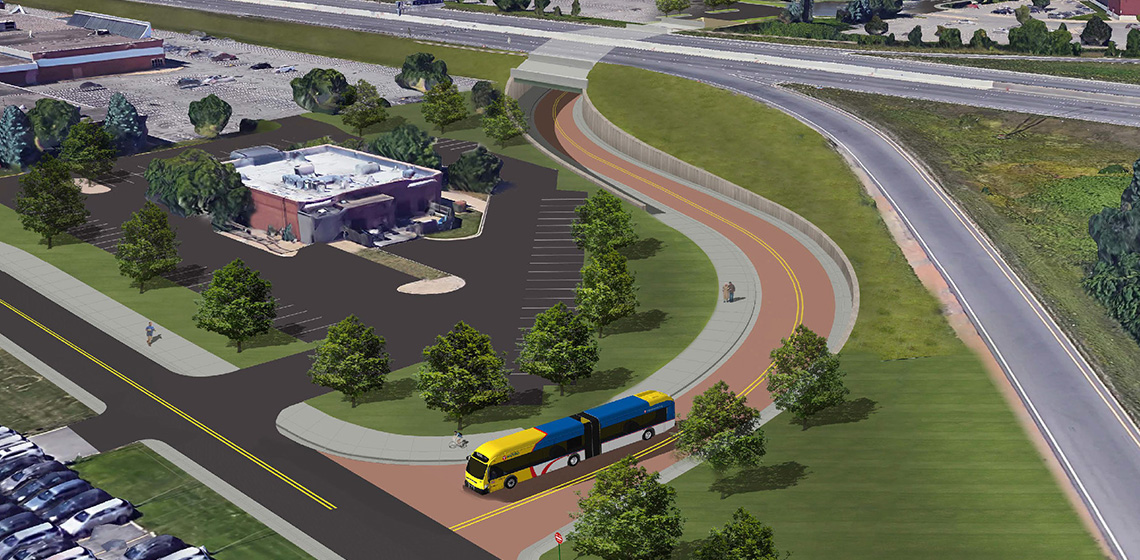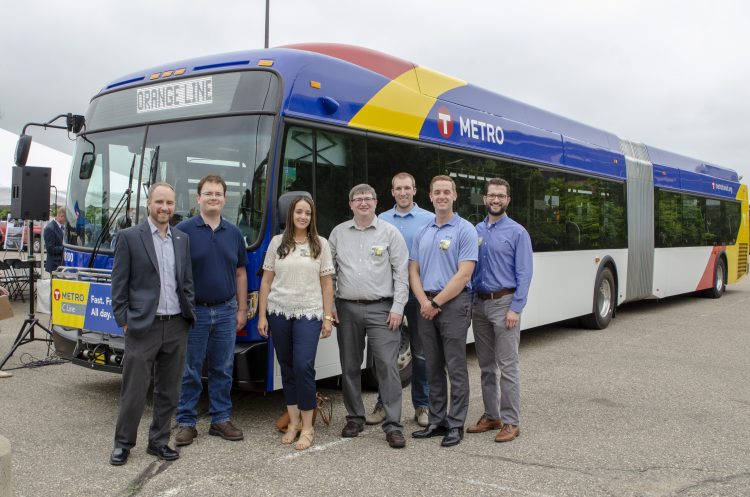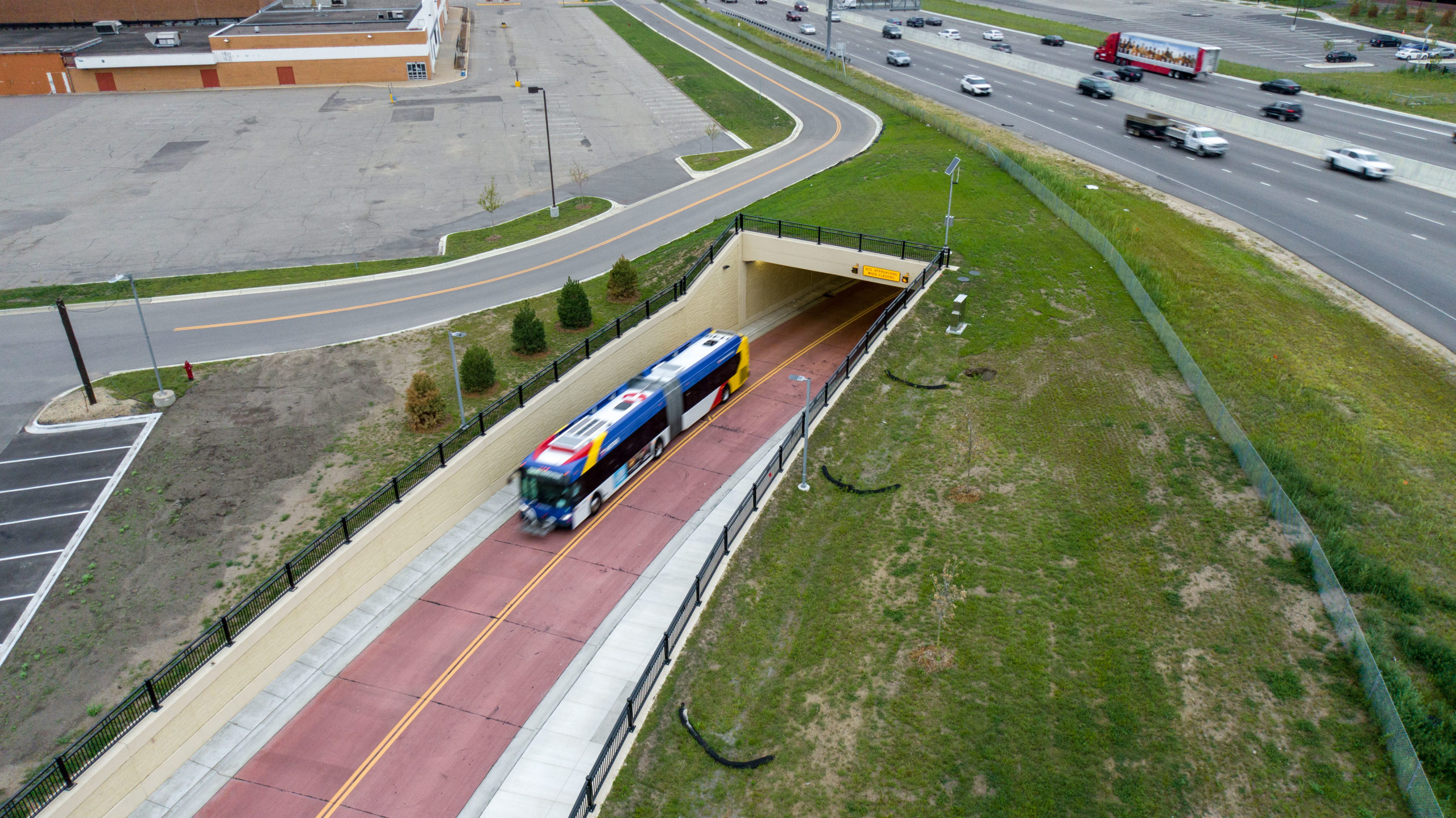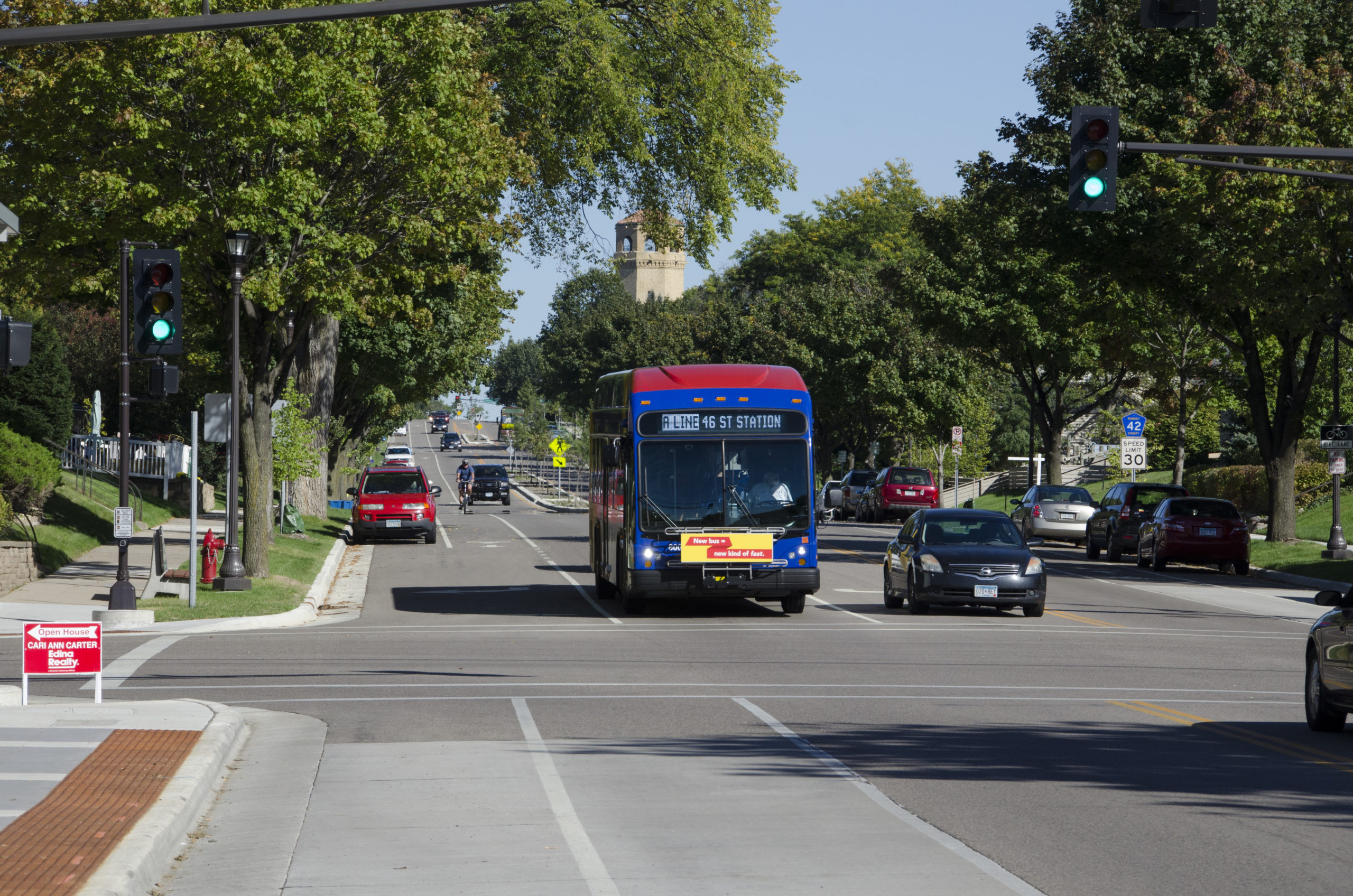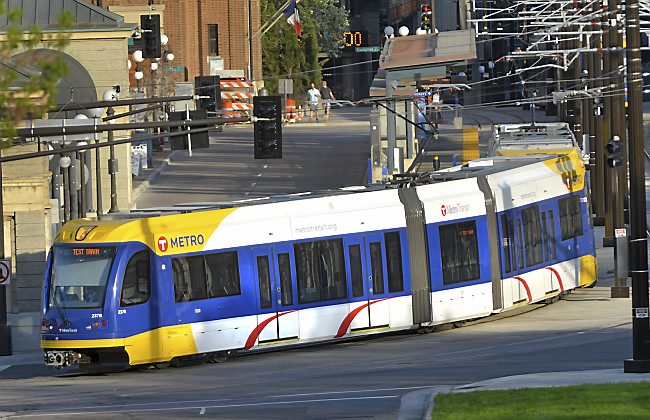A transit system focused on the experience of the rider requires a person-focused design approach. While the complexity of integrating transit platforms and facilities into public right-of-way or development sites requires rigorous technical analysis and review, all decisions must come back to the quality of the rider experience through constant stakeholder involvement and feedback.
This work continues from design development through implementation to construction, inspection, and testing as the project nears completion. SRF’s Transit design group knows that the success of a project relies on our ability to understand a variety of perspectives and find common values to work towards.
ACHIEVING DESIGN BALANCE
When establishing new design standards, whether for BRT, enhanced express service, or local system redesign, each transit system needs to consider the balance between:
• consistent station designs that support transit service identity, increase users’ sense of facility permanence, aid in navigation for sight-impaired riders and minimize unique maintenance needs, and
• flexible station designs that provide opportunities for reflecting community, cultural, and historic identity, accommodate a broader range of available right-of-way and adjacent street functions, and are appropriately built for a station’s particular ridership volume and station activity.
SRF has been involved in the development of several transit regions’ standards, with an awareness that this careful “consistent/flexible” tradeoff process is important, precedent-setting, and unique to each region’s transit story.
